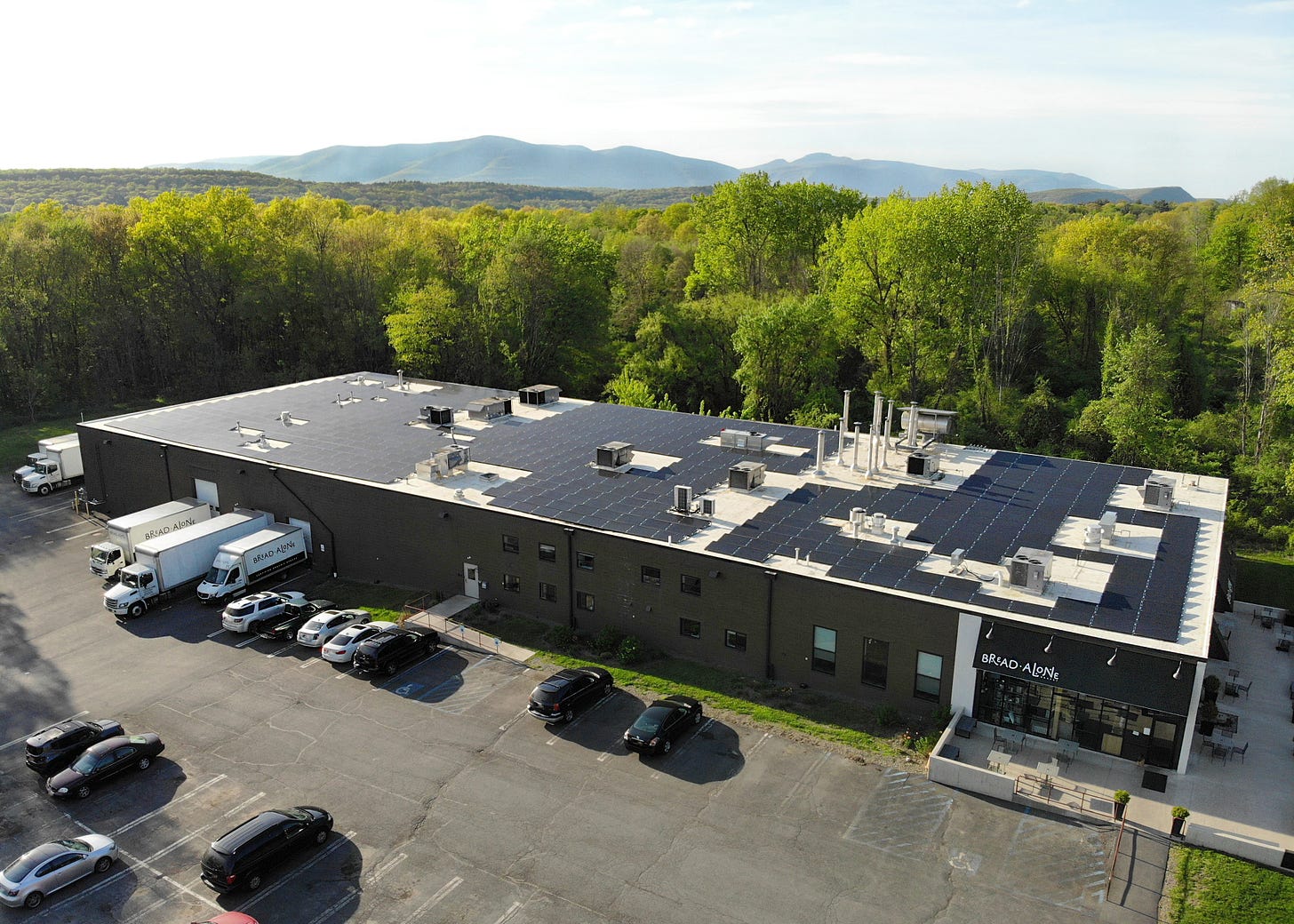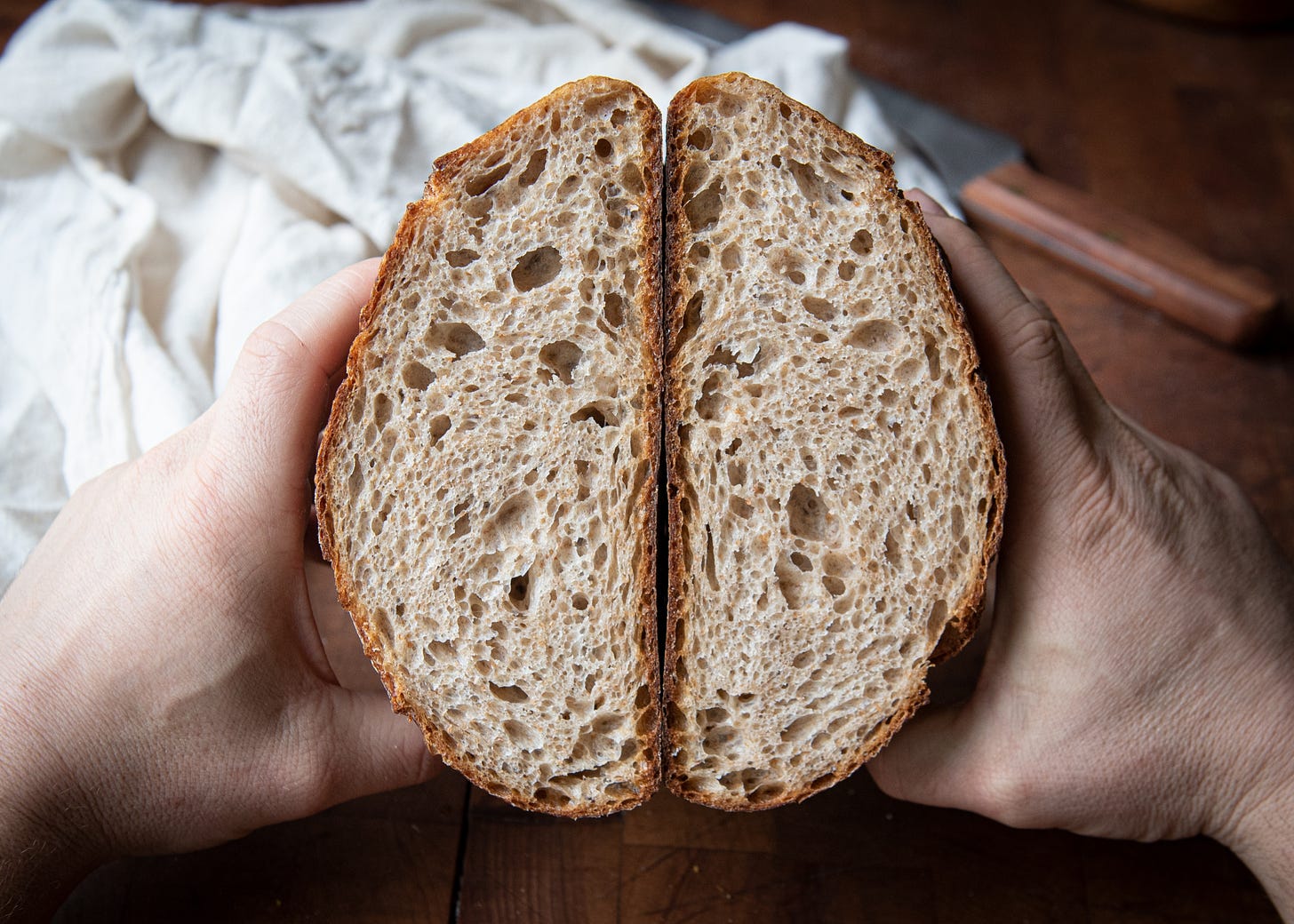Is Bread Dead?
The Bread (7th) Edition of the Negative Foods Newsletter
I used to joke with Abby & Josh, two (fantastic) colleagues I recruited years ago from the world’s largest baking company, that “bread’s dead.”
Maybe coastal elites are eating less bread, but wheat remains the third largest crop in the world. Like beef in the first edition of the Negative Food Newsletter, bread is big, and bread is a big climate problem. But! Like beef, bread done right could be a big positive lever to reverse climate change. Long live bread!
Researchers at the University of Sheffield conclude that the carbon footprint of bread isn’t mainly from tractors or trucks, or bakeries and butter. It’s the fertilizer. Their LCA shows that 43% of bread’s greenhouse gas emissions are from fertilizers used to grow wheat (mostly natural gas fertilizer production - the Haber-Bosch Process).
Of course, not all bread is created equal. And some researchers argue that wheat produced with regenerative agricultural practices can have a carbon negative footprint. This would mean drawing down more carbon from the atmosphere than would be released.
Which brings us to Bread Alone Bakery. Long before this newsletter, Bread Alone was the favorite of my terrific 12yo daughter Annalise. We buy Bread Alone’s whole wheat sourdough (see product review below) at the Pleasantville Farmers Market.
I was thrilled to recently learn that our favorite bread is carbon neutral certified.
Where did the journey begin? In a conversation on Monday, Bread Alone CEO Nels Leader explained to me that he was inspired by Bread Alone’s founders, his parents. They were committed to organic sourcing when they began in 1983, seven years before the USDA even recognized the organic standard. Nels said that his parents were values-first entrepreneurs during his formative years. Today, he considers climate to be the top issue of his generation, and an issue that especially affects the least fortunate among us.
Years ago, Nels got educated on climate change and what Bread Alone could do about its carbon footprint. Today, he see the company’s buildings and transportation as the two biggest areas for carbon footprint improvement.
Bread Alone is already producing solar electricity from the roof of their headquarter building.
Next, Bread Alone is constructing what they expect to be the first carbon neutral bakery in the U.S. It will continue to use scrap wood as an oven fuel source, but it will also use innovative Heuft ovens powered by renewable electricity. Nels hopes one day to deliver his bread in Lion electric trucks (also powered renewably). Lion, do you hear us?
He’s also, of course, focused on sourcing, and he believes that organic and regeneratively produced wheat is an important part of Bread Alone’s journey. He recognizes that we don’t yet have certainty regarding how regeneratively produced wheat can be carbon negative, but he’s paying close attention, and intends to continue to be a leader. I’m excited to shine our spotlight on Bread Alone in this edition of the Negative Foods Newsletter.
I feel lucky to spend much of my time in the Hudson Valley, where Bread Alone is also based, so let’s consider other Hudson Valley players for inspiration:
Ben Dobson, farm manager of Stone House Farm. Stone House Farm is growing wheat and other crops with regenerative practices.
Matt Sheffer of Hudson Carbon. The mission of Hudson Carbon “is to implement a marketplace that instigates a radical shift to regenerative agriculture and ecological restoration.” Hudson Carbon’s “marketplace connects real people to real farmers doing really hard work,” including Stone House Farm.
Sam Shiller of Carbon Yield. Sam is the CEO of Carbon Yield, which helps farmers access new revenue streams in the carbon markets. Listen to this episode of the Investing in Regenerative Agriculture podcast to learn more.
Dan Barber of Blue Hill at Stone Barns. Dan leverages his powerful voice to advocate for table service restaurants to serve foods made from cover crops and regenerative practices. More: Dan talks about wheat. Dan talks about bread. Ingredients that wouldn’t exist without Dan.
I hope you are inspired to eat more carbon neutral bread!
Who else inspires you? Send your ideas!
Product Review: Bread Alone Whole Wheat Sourdough
I didn’t need to buy anything to review Bread Alone, as my family always has it in stock. If you live in the Hudson Valley or near New York City, you’re in luck. If not, you may need to wait until you next visit this beautiful part of the world.
Most mornings, Annalise enjoys Bread Alone whole wheat sourdough lightly toasted with Marmite. For lunch yesterday, she cheerfully brought a sandwich of Bread Alone’s sourdough, Belcampo’s lemon pepper chicken breast, and melted gruyere cheese.
Any way you eat it, you’ll agree this is the tastiest bread you’ve had. And, I love the simple ingredients list: “Water, organic whole wheat flour, organic wheat flour, organic rye flour, organic whole wheat sourdough, and sea salt.” And, of course, climate neutral food always tastes better!
Send ideas for foods to review!
Your Feedback.
The Feedback edition of the newsletter attracted a lot of, um, feedback. Some readers lamented the lack of online civility. Others agreed that ad hominem attacks were baseless, or that all meaningful change attracts criticism. Mostly, though, readers simply expressed support.
Allison Kopf, an old friend, a former colleague, and the rocking founder and CEO of Artemis, said “I loved the last one in case you didn't get enough positive feedback :) Love the thinking about how big ag/big food can play a part in this movement.”
What’s your feedback on the Is Bread Dead? edition of the newsletter? Let me know!
For Your Further Consideration:
Your Questions About Food and Climate Change, Answered; How to shop, cook and eat in a warming world
The most sustainable bread in the world
How to reduce the environmental impact of a loaf of bread?
Bread Alone to open first carbon-neutral bakery in U.S.
3 Food and Beverage Companies That Are Carbon Neutral
General Mills: We will advance regenerative agriculture on 1 million acres of farmland by 2030
Improving farming practices reduces the carbon footprint of spring wheat production
If Grown Right, Wheat Might Help Fight Climate Change
Indigo: Earn extra income and improve yields with our market-leading carbon program
The Nature Conservancy invests in 5 soil health startups
The views in this newsletter belong solely to Paul Lightfoot (and not to BrightFarms or other organizations). This newsletter accepts no advertising. Learn more about this newsletter at https://paullightfoot.substack.com/about.




Good bread -- and Bread Alone is the best! -- is never dead. Happy to learn about how we can make bread better! Thanks for educating me.